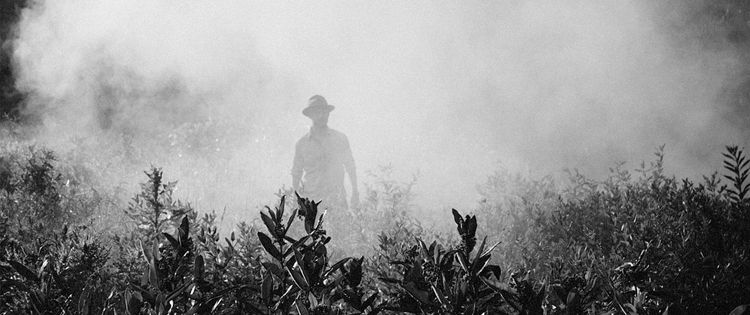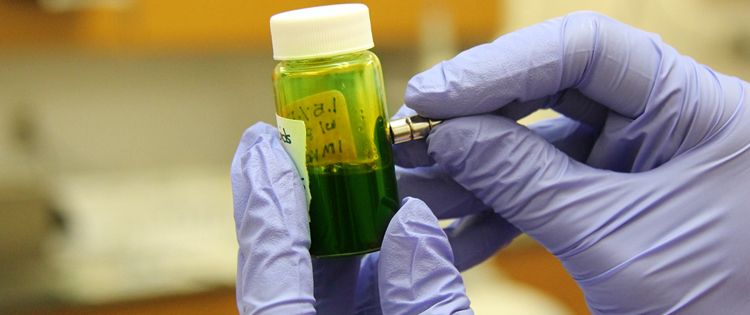Despite the growth of the cannabis industry, one of the prevailing concerns is its regulation and product safety. In states where cannabis has been legal for either medical or recreational use, authorities have begun to establish guidelines for production and overall quality.
In Oregon lately, the first “health alert” on contaminated cannabis was issued on the unlawfully high amount of pesticides in medical samples sold by a licensed distributor. It is a sure sign that the industry has a long way to go in quality control.
There is a reason that MyDx – a personal sample tester aimed at the cannabis industry – is taking off.
Cannabis, as an agricultural crop, is no more immune to contamination than other things. Yes, there is such a thing as contaminated cannabis.
However the fact that it is a high cash crop and the industry in most states is just getting organized, means that users must always be alert for potential contaminants.
Obviously buying from a registered dealer rather than the black market is a step in the right direction, although these days, unfortunately, it is still no guarantee that the products you buy are safe.
Here is a brief overview of the issues you need to consider.
Pesticides

Most states with a regulated industry have established guidelines (at minimum) for the kinds of pesticides that ‘cannafarmers’ can use, as well as the parts per million that are safe for human consumption. That said, it is best to shop for brands and farms that either go “all natural” or “bio” in growing whatever you use.
Are you smoking it or eating it? You don’t want to ingest other things when you do, particularly that could also be hazardous to your overall health.
Be especially careful with concentrates and edibles – if you can. They are made from many different plants, and often from different sources so do as much research as you can on where companies source their cannabis.
Bacteria and Mould

Both bacteria and mould are actually more of a danger in regulated states than pesticides. Both tend to affect the plant during its drying process.
Few studies have been conducted on both, but in a few reports from the 1970’s and 80’s it established that mould when smoked, can also infect smokers downstream.
A more recent Dutch study of cannabis in established coffee shops contained traces of dangerous contaminants including E. Coli.
If you smoke it, it ends up in your lungs.
If you eat it, it ends up in your body.
Other Chemical Contaminants

One of the biggest concerns to consumers these days, particularly with the increased popularity of concentrates and shatters, is the amount of heavy metals and other chemical contaminants found in them.
Butane for example, is the chemical most often used during the production process, and if not done properly, can end up in the final product.
Marijuana plants also draw in heavy metals if they are grown in contaminated soil.
How To Protect Yourself
The regulated industry is the best place to shop. Don’t buy from the black market. However, even this is no guarantee. Be an educated consumer, do your research, and determine who is growing what in your state.
Buy A Personal Tester
The best way to protect yourself is to do it yourself. While personal testing products can be a bit on the pricey side, those who use the drug regularly will undoubtedly consider this a good investment, particularly until state industries are better regulated and overseen.
Do Your Research
There is at present, no oversight of state marijuana industries – a development that will only happen when marijuana is made legal at the federal level. As a result, while state inspectors are clearly trying to do their jobs, not enough resources and guidance have been developed or deployed in the field.
A great way to protect yourself is to do your own research. You can find information available from patient’s advocacy groups like Americans for Safe Access, which has begun publishing the first such guides in the country on a regular basis.
ASA also offers third party certification to companies, which allows them to claim that their production and manufacturing facilities have been independently reviewed by outside parties. This covers cultivation, manufacturing, packaging, labelling, distribution and analytics.
Certification itself is not cheap – which means that only licensed and regulated companies can afford the same. A successful inspection and certification also mean that the company it was issued for can put the logo on their packaging.
Look for such logos on the products you buy. Right now, at least, this is the best kind of protection you can assure for yourself.
What other preventive measures against contaminated cannabis do you know?
Share with us in the comments below!
- Guenter Weiglein – The Persevering Patient - July 7, 2017
- Dr Peace – A German Cannabis Doctor On The Go - July 5, 2017
- The German Marijuana Edibles Market - July 3, 2017


